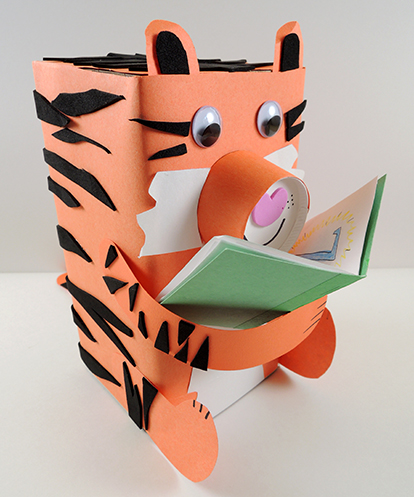 It’s story time, and this sweet tiger is eager to read! Best of all, the book is all about your favorite things. It’s art and autobiography, mixed into one!
It’s story time, and this sweet tiger is eager to read! Best of all, the book is all about your favorite things. It’s art and autobiography, mixed into one!
We read Read to Tiger, written by S.J. Fore and illustrated by R.W. Alley (Penguin Group, 2012; read here by Super Mega Toy Squad). A little boy is trying to quietly sit and read, but an effusive and playful Tiger keeps interrupting with everything from chewing gum to karate. Will Tiger ever settle down? Well, maybe if the book happens to be about his favorite thing…TIGERS!
You’ll need:
- A large tissue box
- Construction paper
- Paper cup
- Glue, scissors, stapler, and tape for construction
- Markers for decorating
Wrap the tissue box in orange construction paper. Your tiger stripes can be black construction paper, drawn on with markers, or you can use self-adhesive foam like we did. The tiger’s muzzle is a shortened paper cup. Add ears, a white tummy, a tail, and some hind legs. Finally, overlap two rounded strips of construction paper around the front of the box so the tiger can cradle the story book. Done!
 Our book was about 4″ tall. We folded and stapled together some sheets, then filled the pages with drawings of our favorite things…favorite bird, holiday, weather, number, dessert, color, drink, fruit, animal, etc.
Our book was about 4″ tall. We folded and stapled together some sheets, then filled the pages with drawings of our favorite things…favorite bird, holiday, weather, number, dessert, color, drink, fruit, animal, etc.
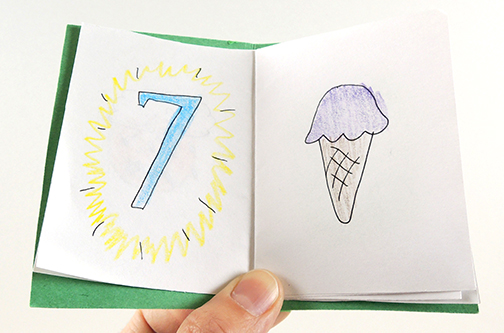
Finally, in keeping with the spirit of the book, story time kids could come “read” their book to me (with a few additional tigers in attendance, of course). And please note the awesome sparkle stem eyeglasses on the tiger on the far left…

This story time was special for another reason, but we can’t do a reveal right now! Stay tuned, and in a few months, all can be shared!

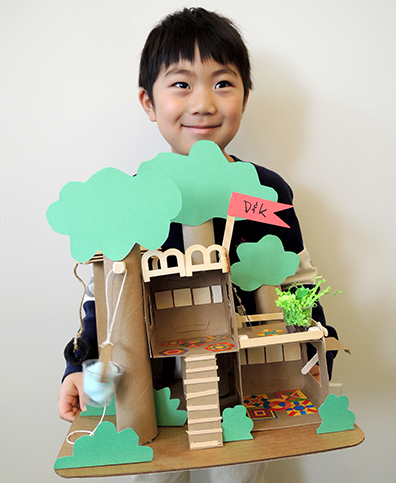 Design you own tree house complete with tire swing, water bucket, and stunning views of the verdant foliage. Best of all, it can be crafted with just about anything!
Design you own tree house complete with tire swing, water bucket, and stunning views of the verdant foliage. Best of all, it can be crafted with just about anything!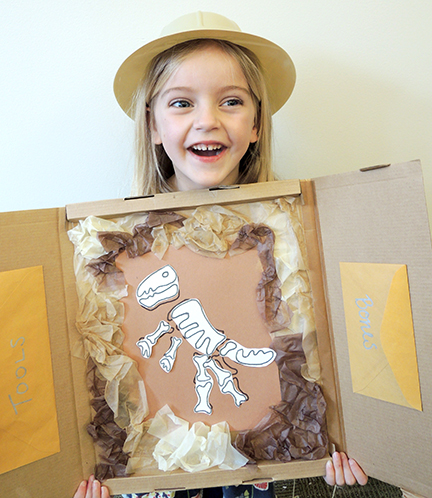 It begins as a simple brown briefcase, but unfolds into a magnetized dino dig! No briefcase? No worries! This Katie-designed masterpiece can be replicated with any box top or cardboard surface.
It begins as a simple brown briefcase, but unfolds into a magnetized dino dig! No briefcase? No worries! This Katie-designed masterpiece can be replicated with any box top or cardboard surface.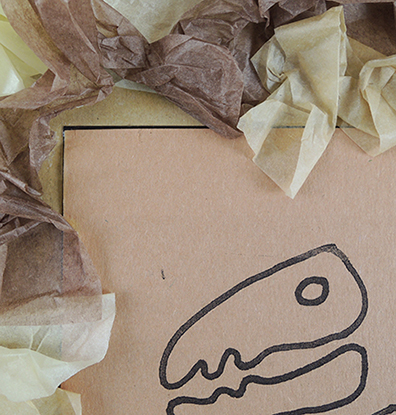 Now cut the dino bones from the template. Section the magnetic strip into pieces, then stick them onto the backs of the various bones. The bones will now connect to the dino template (and you can see we added a tissue paper border for extra fun)!
Now cut the dino bones from the template. Section the magnetic strip into pieces, then stick them onto the backs of the various bones. The bones will now connect to the dino template (and you can see we added a tissue paper border for extra fun)!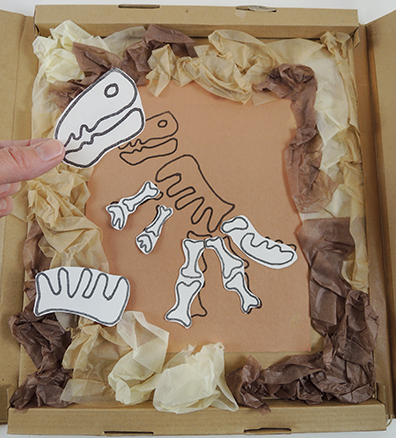 Scatter the bones through a room and have your little paleontologists discover, dig, and collect them up using the paper tools from
Scatter the bones through a room and have your little paleontologists discover, dig, and collect them up using the paper tools from 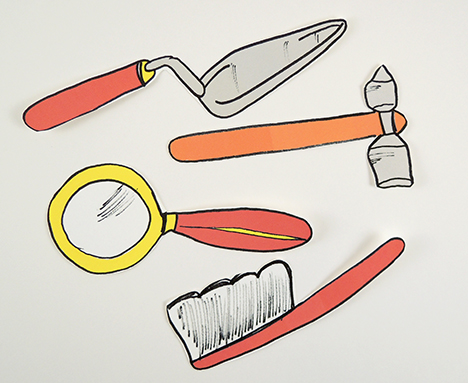 We had the good fortune of scoring some flat cardboard boxes with flaps through
We had the good fortune of scoring some flat cardboard boxes with flaps through 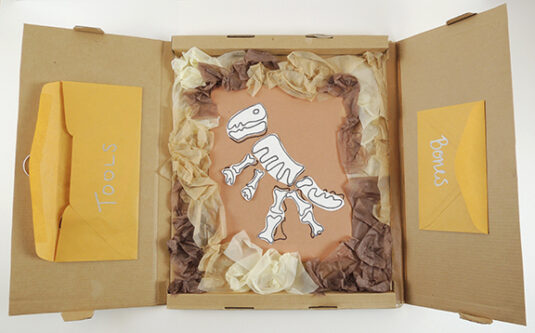 We added a string strap to turn in into a portable briefcase, complete with a wood bead and rubber band closure and
We added a string strap to turn in into a portable briefcase, complete with a wood bead and rubber band closure and 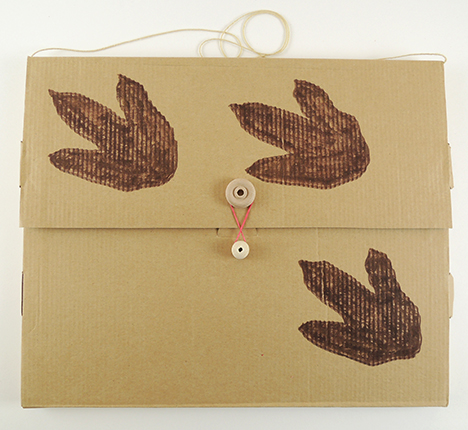
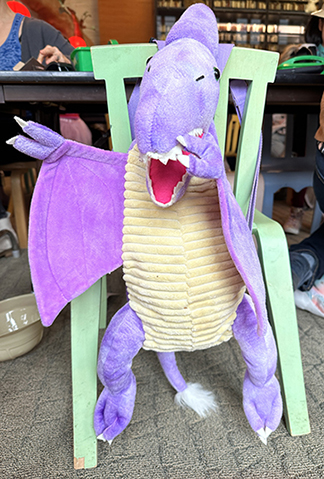 And I can’t resist adding this photo of Katie snagging the above photo whilst being carefully supervised by the dino bag’s owner. So sweet!
And I can’t resist adding this photo of Katie snagging the above photo whilst being carefully supervised by the dino bag’s owner. So sweet!